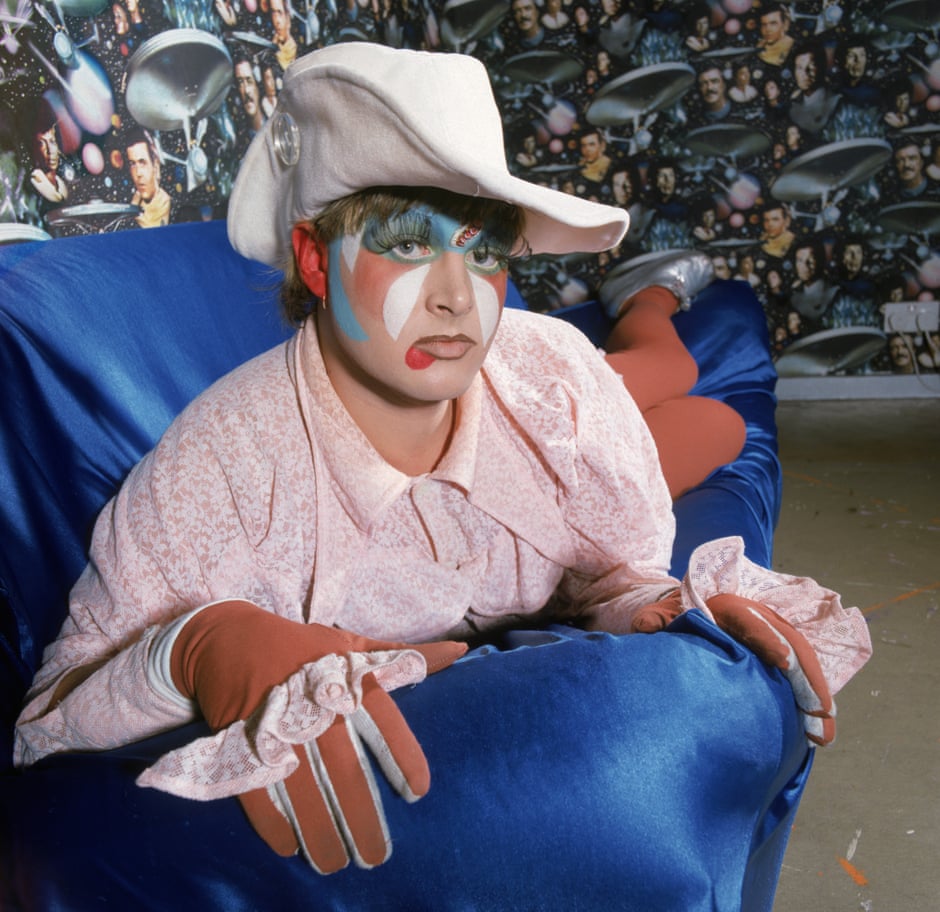Leigh Bowery: Enigma & Essence
Allison Armijo // Blog Writer
How do you define “queer”?
Do you see it? Do you feel it? Use one definition or many? Is it an assault, or a celebration? I guess that depends. Alison Bancroft, media culture specialist from the University of London, attempts to answer these questions through the lens of a reverential, cringe-worthy queer icon: Leigh Bowery. Leigh Bowery is an exalting figure. He transforms and transgresses social norms all while engaging and disgusting his audience. His essence is enigmatic, and he wouldn’t have it any other way.

Bancroft employs two of Bowery’s common performance tactics to convey his importance as a queer performer: illustrative, gender-related symbols, such as genitalia, and a marker of social recognition: the face. By describing Bowery’s sexually-ambiguous expressiveness, Bancroft weaves elements of his past performances into a social stance on the queering of social norms like gender and femininity. In doing so, Bancroft not only makes Bowery more accessible to a, dare I say, “more academic” audience, but also exposes the public to Bowery in a way that neither critiques nor reveres his art. Bancroft uses her position as an accredited academic to observe Bowery and his intentions —or lack thereof— in an (arguably) increasingly heteronormative society.
Specifically focusing on the subject of gender as an avenue of critique, Bancroft details how, similar to other types of queer performance art such as drag, Bowery hyperbolizes certain signifiers of traditional gender roles to reveal how unstable the constructs of masculinity and femininity really are. He points out how they are not so much insecure as impossible to fully articulate. In this sense, the cultural and social assumptions surrounding masculinity and femininity, especially within a queer setting, are misconstrued to benefit an oppressive, hegemonic regime. By recognizing his position both as a performer and member of society, Bowery subverts intention and replaces it with a statement.
But what exactly that statement is remains up to the audience — or does it? Such explicit ambiguity characterizes Bowery’s work as inherently political; he points out that the assumed correlation between things like gender and social performance are misguided, to say the least. For example, the female and femininity: seems connected, right? Have you ever stopped to ask yourself why?
It is exactly these questions which Bowery sets out to answer. Or maybe he doesn’t even attempt to answer them, but rather point out that there is a question that needs to be asked.

Bancroft’s position here is essential, as she articulates Bowery’s intentions without the performance artist himself having to explain. This is imperative to the overall reception and effect of Bowery’s art, as it does not detract from the power or extent of his message. Thus, Bancroft argues that Bowery’s performances are innately queer because of how they subvert traditional thought for a more “radical” reception and understanding of constructs like gender and sexuality. And his performances, which manipulate, misconstrue, and ‘play with’ the body, point out the sexed objectivity and subjectivity of the human body.
However, it is important to acknowledge that Bowery’s social impact is only a portion of his legacy as a queer performance artist. Bancroft elaborates on his impact from an ideological standpoint, explaining how Bowery’s performances stick with people because they are both radical and impossible; they cringe and excite; they scare and entertain. This seemingly destructive environment which Bowery amassed through his productions allows his audience to simultaneously evade and immerse themselves into the erotic, relational pleasures of social impossibility.
Overall, Bancroft sets out to articulate the inarticulate. Her article, titled “Leigh Bowery: Queer In Fashion, queer in art,” encompasses various aspects of Bowery’s life and art as they pertain both to him and to the general public. This article is not only interesting, but expository, as it reveals the ‘disruptive’ potential of Leigh Bowery and why queer artists like him will continue to transcend time and space.
